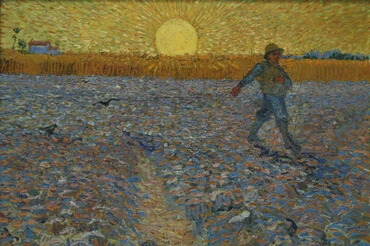True Christian Religion # 584
584. From this it is now plain that there is a correspondence between natural and spiritual births. From this correspondence it follows that in describing re-births one can not only speak of conception, gestation in the womb, birth and upbringing, but such phases actually occur. What they are like may be seen discussed in the section on regeneration. All I will say now is that the human semen is conceived inwardly in the understanding, formed in the will, and transferred from there to the testicle, where it clothes itself with a natural covering; and so it is ejected into the womb and comes into the world.
There is as well a correspondence between a person's regeneration and everything in the vegetable kingdom. That is why in the Word too man is described by a tree, his truth by a seed, his good by a fruit. A useless tree can as it were be re-born, and afterwards bear good fruit and good seed, as is clear from the practice of grafting and inoculation. Even though in these cases the same sap rises from the root through the trunk 1 to the point of the graft or inoculation, it is none the less converted into good sap and produces a good tree. It is much the same in the church with those who are grafted into the Lord, as He teaches in these words:
I am the vine, you are the branches. If someone remains in me and I in him, he bears much fruit. Unless someone remains in me, he is cast out like a branch, and is withered and cast into the fire, John 15:5-6.
Poznámky pod čarou:
1. Reading stipitem 'trunk' for stapidem 'stirrup'.
Field

A "field" in the Bible usually represents the Lord's church, and more specifically the desire for good within the church. It's where good things start, take root, and grow. When you have a desire to be a good person and to do good things, the natural first questions are "What does that mean?", "What should I do?", "What can I do?". You look for ideas, concepts, direction. Once you figure out something you want to do or a change you want to make in yourself, you seek specific knowledge. If you want to volunteer at a food pantry, say, you'd need to know whom to call, when they need help, where to go, what to bring. Armed with that knowhow, you're ready to get to work. That process could be compared to food production. You start with a field -- which is that desire to be good. Then you plant seeds -- those ideas and concepts. Those seeds sprout into plants -- the specific facts and knowledge needed for the task (easily seen in the food pantry example, but also true with deeper tasks like "being more tolerant of my co-workers" or "taking more time for prayer," or "consciously being a more loving spouse"). Finally, those plants produce food -- the actual good thing that you go and do. The Writings also say that in a number of cases a "field" represents the doctrine, or teachings, of the church. This sounds markedly different. The desire for good is emotional, a drive, a wanting; doctrine is a set of ideas. But for a church to be true, its doctrine must be centered on a desire for good, and must lead people toward doing what is good. So sound doctrine is actually closely bound up with the desire for good.






